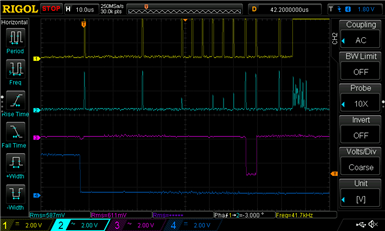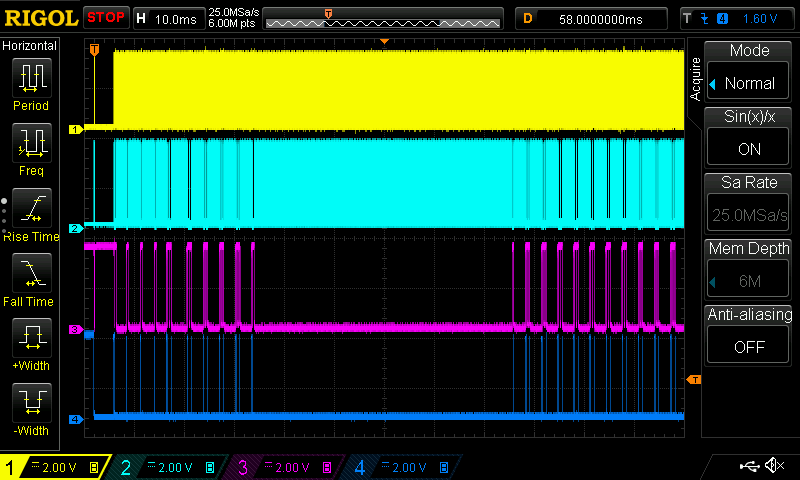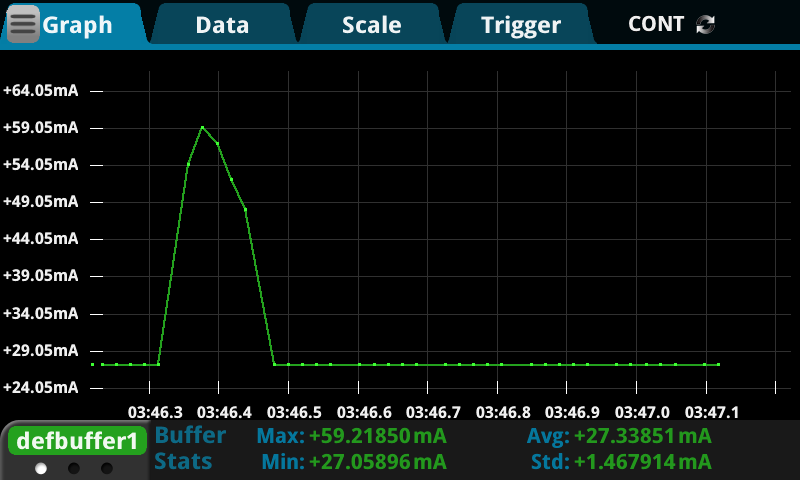follow up of an earlier discussion: what do the SD Card signals look like on an oscilloscope.
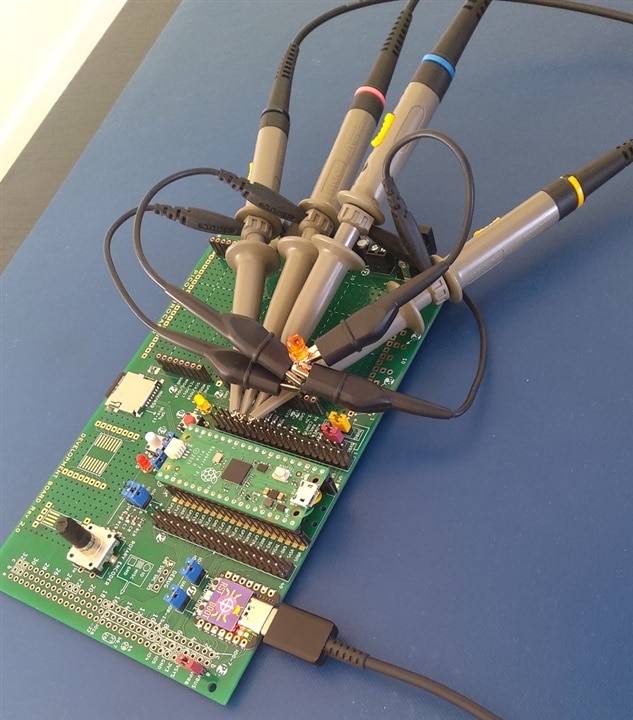
I've made these connections with the oscilloscope:
| EuroCard | Pico pin | function | channel |
| *CS | IO13 | SPI1 CSn | 4 dark blue |
| MOSI | IO11 | SPI1 TX | 2 light blue |
| SCLK | IO10 | SPI1 SCK | 1 yellow |
| MISO | IO12 | SPI1 RX | 3 magenta |
All channels are set to 2 V/div. Here are the results of the start of a communication.:
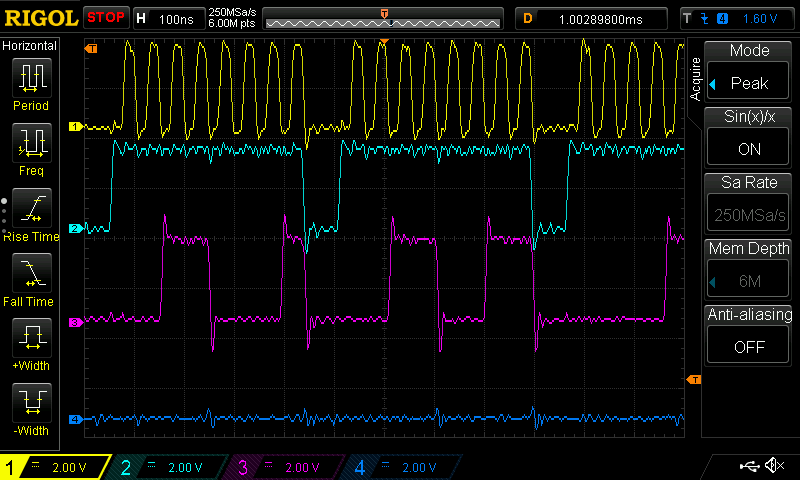
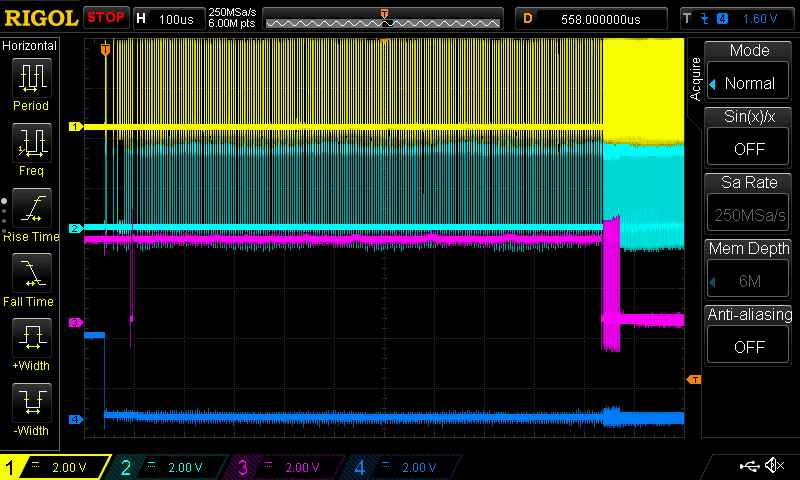
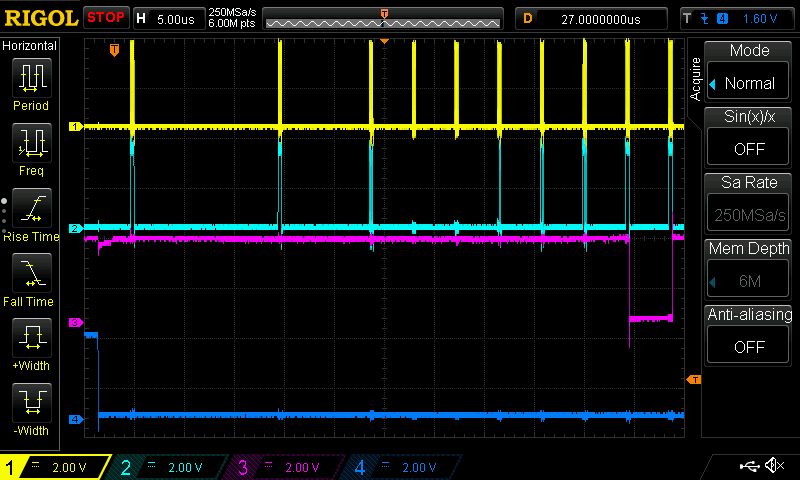
All 3 scope captures are based on a single sample. Just different locations and time-base views.
This is the old sloppy sample that Michael refers to in the 1st comment:
